Travelling around Spain (and sometimes further afield) I´ve seen lots of monuments to Christopher Columbus. As you often hear controversy surrounding his nationality. I wanted to try to piece together information about this famous navigator.
Using photos from my travels around Spain, I take a look at what is understood about Christopher Columbus. Or Colon as he´s known as in Spanish language.
Who was Christopher Columbus?
Although there are uncertanties in the nationality of Columbus. The most common theory up to now is based on documents stating that he was born in Autumn 1451 in Genova, Italy. Son of a weaver and wool merchant. The family lived in a 2 floor house on Via di Porta Soprana. The ground floor of the home was his fathers workshop and the upper floor were the living quarters. Columbus did not come from a wealthy background, still they had 5 children to support.
Currently there is a DNA study being carried by a researcher at Granada University. It maybe determined that in fact Columbus was from Pontevedra, Galicia, from Mallorca or even Portuguese. Since 2003 this careful and intricate investigation is ongoing although the results are now expected soon. There is even a home on the island of Mallorca which is believe to have been the family residence, its located in Felanitx, in the South East of the island.
Christopher Columbus Names
- Cristoforo Colombo – Italian
- Cristobal Colon – Spanish
- Christovão Colom – Portuguese
- Christopher Columbus – English
He began working on ships as young as 14 years old. And one of his brothers Bartholomew Columbus became a recognised cartographer. Mapmaking from around the 1460´s. He was an important ally in preparing voyages and planning. Christopher Columbus later named the island of Saint Barthelemy after his brother.
In 1474 Columbus took a sailors job on shipping route to Chíos in the Aegean Sea. At this time he became financially stable. From the port of Genova many merchant ships sailed during this period. The Greek Island of Chios was trading in mastic resin, alum, salt and pitch coke for three centuries.
Monument to the Discovery Faith , Punta del Sebo, Huelva
Marriage
Christopher Columbus only married once in his lifetime. Yet he had two children with different mothers.
- In 1479, he wed Filippa Perestrello-Moniz, a Portuguese noblewoman. They had a son Diego Columbus in 1480. The marriage was short as she died in 1483.
- In 1487 he took a mistress Beatriz Enriquez de Arana yet he did not marry her. The following year 1488, they had a son, Hernando Colon.
La Rabita Monastery
Columbus stayed several times at the Monastery La Rabita, located in Huelva province. This was an important sanctuary for him at a time when he was misunderstood by many. At a time when the earth was believed to be flat, his plans seemed like madness to some people.
Franciscan monks at the monastery were used to helping travellers out and Columbus was no different. Fray Juan Pérez had contact with Queen Isabella helped the aspiring explorer to get sponsorship from the Spanish Crown. 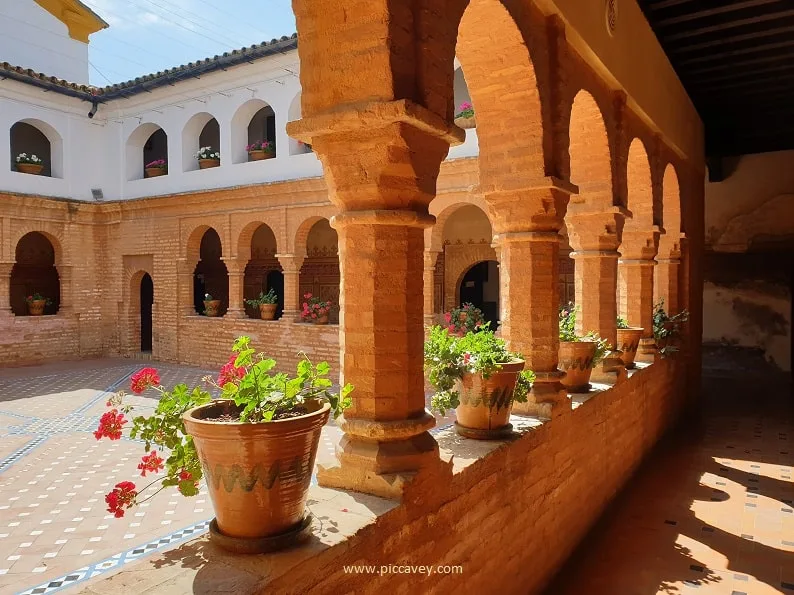
It is estimated that from him first imagining the great voyage that it could have taken him around 10 years before actually setting sail in 1492. In 1480´s he was trying to get sponsorship for his great voyage from King John of Portugal. He also was in contact with the French Royalty. Both proposals were rejected. Around this time he moved into Monasterio La Rabita to find consolation.
In 1486 although Columbus was unaware of the plans of Queen Isabel of Castille to support his project. She was discussing the funding of the voyage with Luis Santángel. A coverso who gave a large amount of money to back the first voyage.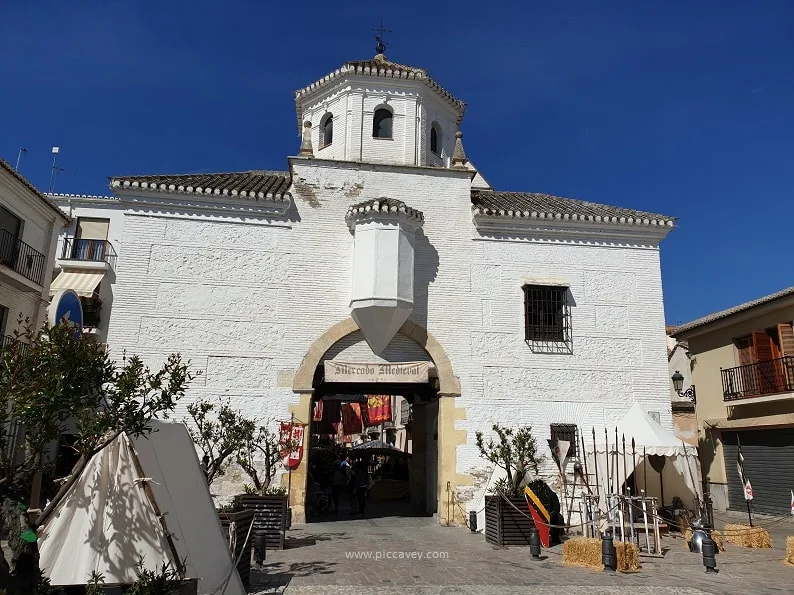
Capitulations of Santa Fé
Columbus was determined to find a route by sea from Europe to India. Although this wasn´t a new idea as even the Romans considered this centuries before. This route was important for trade yet on land it was too dangerous and expensive. Especially due to the power of the Ottoman empire at the time. Spices were an important and expensive commodity during this period. Columbus knew this and wanted to reach Cathay (China) and India.
Not only was Columbus inspired to find this journey for progress and potential riches. He´d been reading the book The Travels of Marco Polo based on travels to Asia between 1271 and 1295.
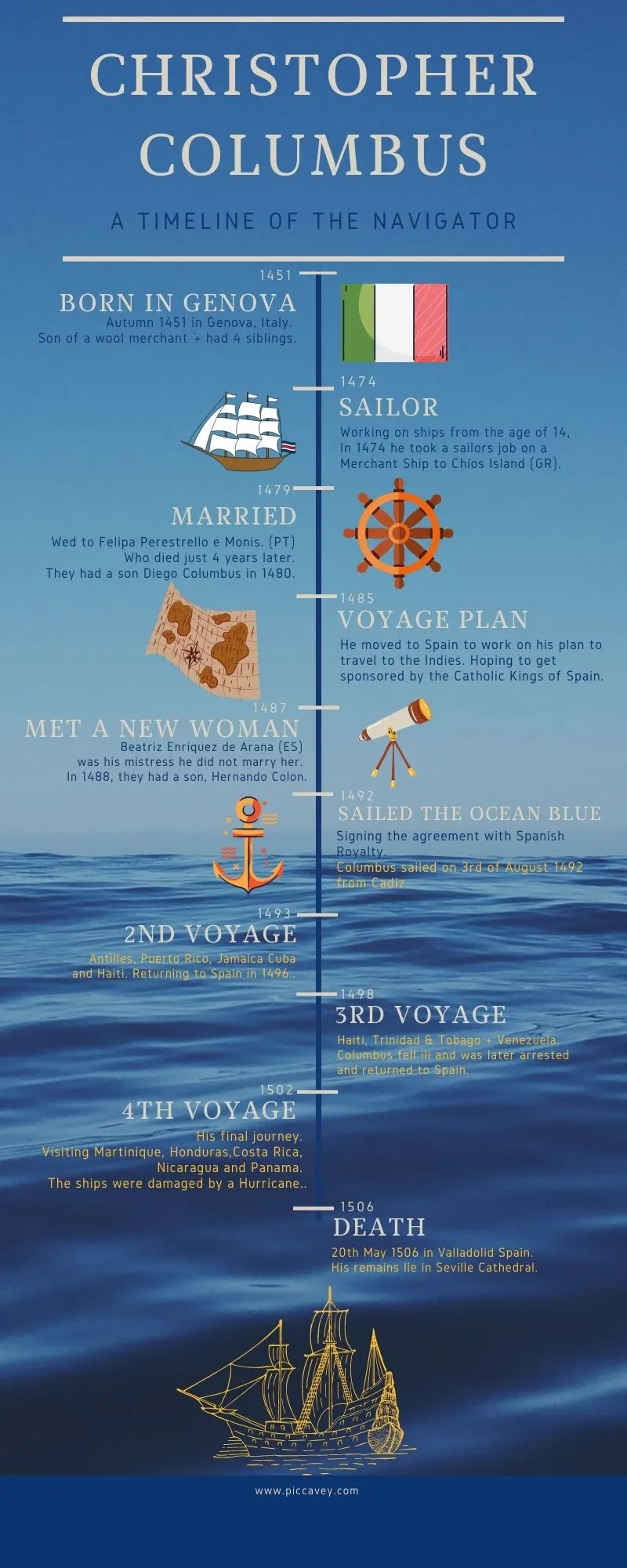
Royal Sponsors
In 1485 he moved to Spain to garner support from the Catholic Kings, Ferdinand and Isabel, who were reconquering Spain from Muslim rule. Enthused with the idea of spreading the Catholic faith to new lands.
In 1491 King Henry VII of England was approached for sponsorship by Bartholomew Columbus, but to no avail.
Finally the Spanish Monarchs agreed to sponsor this epic voyage. Signing the agreement in Santa Fe, Granada. Christopher Columbus agreed to 10% of the profits/spoils from the travels as well as titles of the lands which he discovered. He would also receive a sailors annual salary from the Spanish court.
First Voyage
On the 3rd of August 1492, the three ships, La Niña, La Pinta and Santa Maria set sail from Palos de la Frontera, Cadiz. Two Caravels and one Cargo Ship.
Columbus ships always stopped off in the Canary Islands on their westbound travels to stock up with supplies, water and food. Two months later rather than arriving in India or even on the Asian continent. They arrived on Guanahaní. One of the islands of the Bahamas on October 12th 1492. The crew spending some time sailing around the Caribbean, searching unsuccessfully for merchandise (spices, gold, jewels) to take back to Spain.
Of the three ships that set off, only two returned. The cargo ship The Santa Maria ran aground on 25th Dec 1492. It had to be abandoned. After that they visited Haiti, Cuba, the Bahamas and Dominican Republic . Then returned to Spain in January 1493. Bringing with them turkey, a few new spices and Tobacco. He truly believed that he had travelled to China or Japan.
Second Voyage 1493
Just 6 months after the first voyage, he returned to the Caribbean region with his brother Bartholomew. Visiting the Antilles, Puerto Rico, Jamaica Cuba and Haiti. This trip was not successful either, searching for gold or other riches he didn´t find anything. Wanting to please the Spanish monarchs he sent a group of 500 slaves to Spain (although the was against the Queen´s wishes).
This journey came to an end in 1496. Sadly it marked the beginning of the slave trade for Spain and the beginning of colonization in the Americas.
Third Voyage 1498–1500
Sailing from Sanlúcar de Barrameda this third journey took them to Haiti, Trinidad & Tobago and Venezuela. They had six ships this time. Three to head directly to the Colony on Hispaniola (present day Haiti) and three for exploration.
Columbus fell ill and returned to Hispaniola. He was soon overwhelmed by unrest there. Arrested and sent back to Spain. His titles removed due to accusations of torture and mistreatment of people on the island. Both Bartholomew and Christopher were imprisoned for six weeks on their return.
Not only did they collect things from the countries that they explored, they also took items from Europe and introduced them to the Caribbean too. Sugar Cane that would later create the Rum industry is one example.
Fourth Voyage 1502-1504
Columbus landed on Martinique in June 1502, this was to be his last voyage. He didn´t stay due to a hurricane forecast. They sailed onto visit Honduras, Costa Rica, Nicaragua, and Panama. In June 1503 the crew became stranded on Jamaica. The hurricane destroyed two of Columbus ships. They didn´t receive help from the new governor of Hispaniola and were there until June 1504.
After his last voyage other Spanish navigators took his place and landed on Puerto Rico in 1508, Jamaica in 1509 and in Cuba in 1511. All searching for gold and jewels.
Christopher Columbus Tomb
After a long period of ill health, Christopher Columbus died at the age of 55. On the 20th May 1506 in Valladolid. His remains are buried in Seville Cathedral. Yet the grand tomb was not installed until 1899. The four figures carrying the tomb represent Spain´s kingdoms. Castille, Aragon, Navarra and Leon.
His wish was to be buried in America. Diego Columbus, Christopher´s son planned the construction of a Cathedral in the Dominican Republic. To serve as his father´s resting place. Yet Diego sadly died in 1526 before he completed the Cathedral of Santa Maria la Menor. The remains of both Diego and Christopher Columbus stayed in Seville until 1542. Diego´s widow arranged for them to be buried in Santo Domingo once the Cathedral was completed in 1541.
Recent studies into the nationality and DNA of Columbus are being analysed and reviewed in 2024.
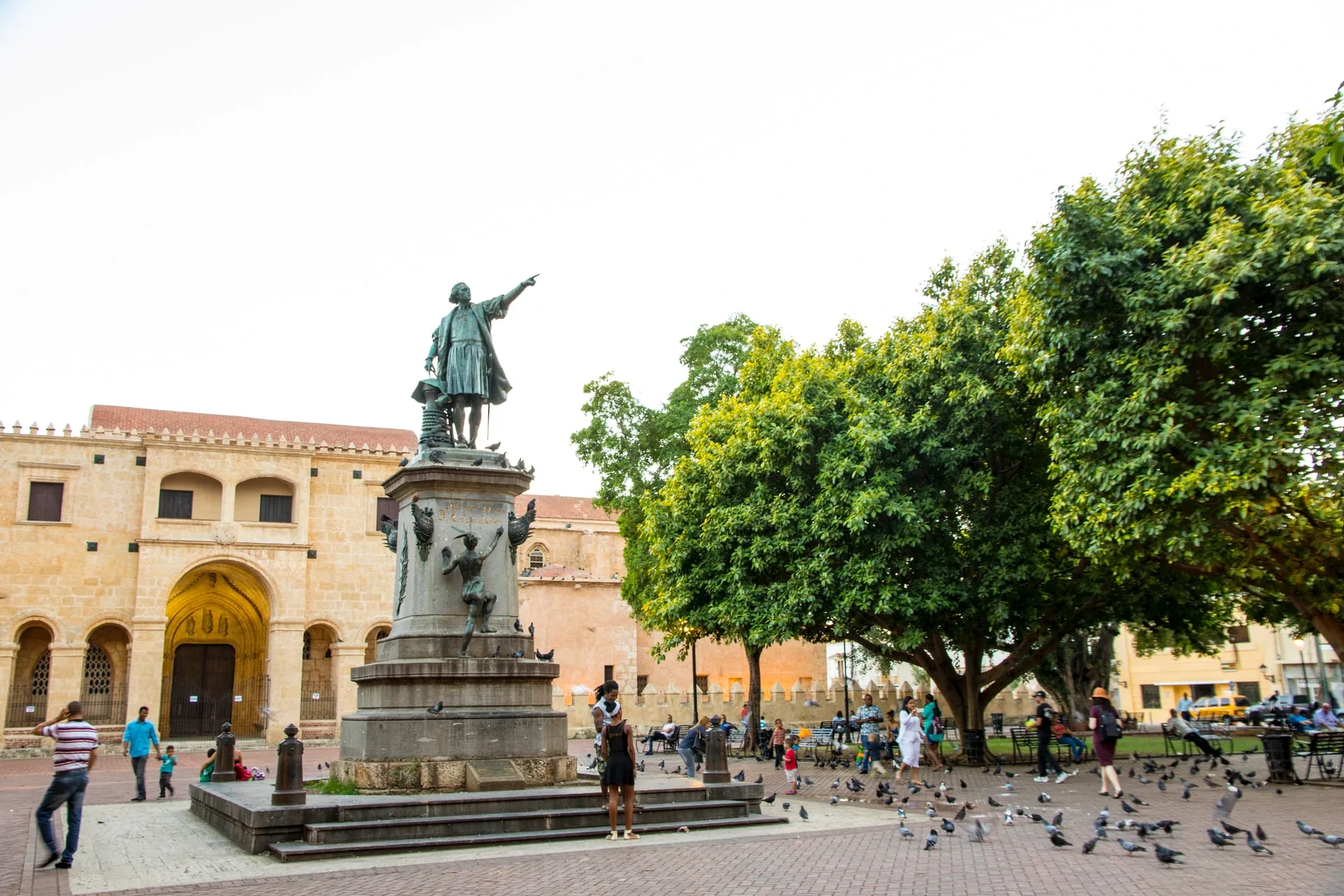
Photo by Robin Canfield on Unsplash
Santo Domingo
That is not the end of the movement for these intrepid men. In 1795 Spain lost the Dominican Republic to France. So the remains were moved to Havana, Cuba and installed in this grand tomb with the four kingdoms of Spain represented.
Later in 1895 this sculpture by Arturo Melida and the remains were returned to Spain. Where they lie still today in Seville´s grand cathedral.
Although he died a wealthy man, he never achieved his dream to find a sea route to Asia and discover riches on his travels. Of course as early as the year 1000, Leif Eriksson had already sailed from Europe across to Canada. There are further investigations into documents of an Italian Sailor in 1345 who seems to talk about America even then.
It´s clear that the discovery of the Americas wasn´t actually first found by Columbus. Although he did begin the era of the colonization and Conquistadors that followed in the years after his voyages.
Columbus Monuments in Spain
There are many Columbus monuments and interesting locations in Spain. Perhaps the most impressive is the Muelle de las Carabelas at Palos de la Frontera. Three replicas of the ships from the first journey are moored there. (as seen on the photos above). You can go aboard to get an idea of how cramped conditions were for the sailors.
Another impressive sight in Barcelona is the Columbus Monument in the Port Vell. You can visit this tall monument looking out to sea. (Not recommended if you have vertigo)
On the Costa del Sol in Benalmádena is the Castillo de Colomares. This huge castle like construction is a monument to Christopher Columbus and his Catholic crusade too.
Columbus Day
Not only are there physical monuments and statues. Some countries celebrate Christopher Columbus day. For example on the 2nd Monday in October in the USA they celebrate. It´s been a federal holiday since 1971.
I saw it for myself in New York some years back. It´s controversial due to the link to slavery and some ask for the festivity to be renamed to the indigenous peoples day.
In Spain the 12th October is the Dia de la Hispanidad. It´s a national holiday across the country, although we dont have such spectacular parades like in the USA. Of course many countries are names after Columbus too.
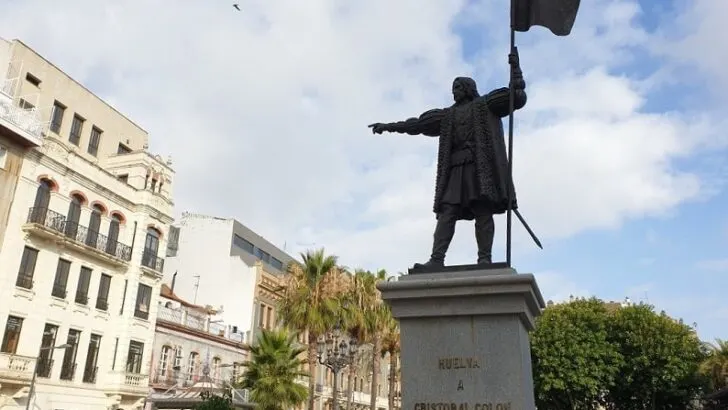
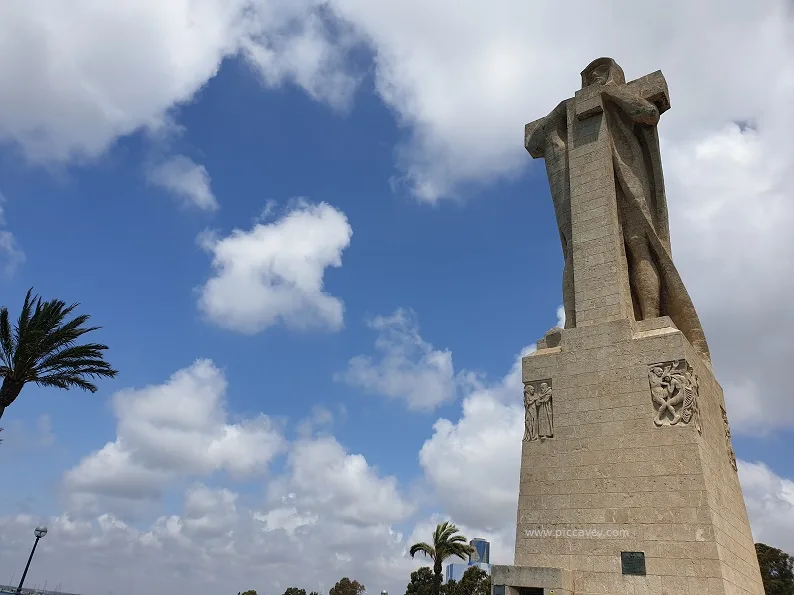

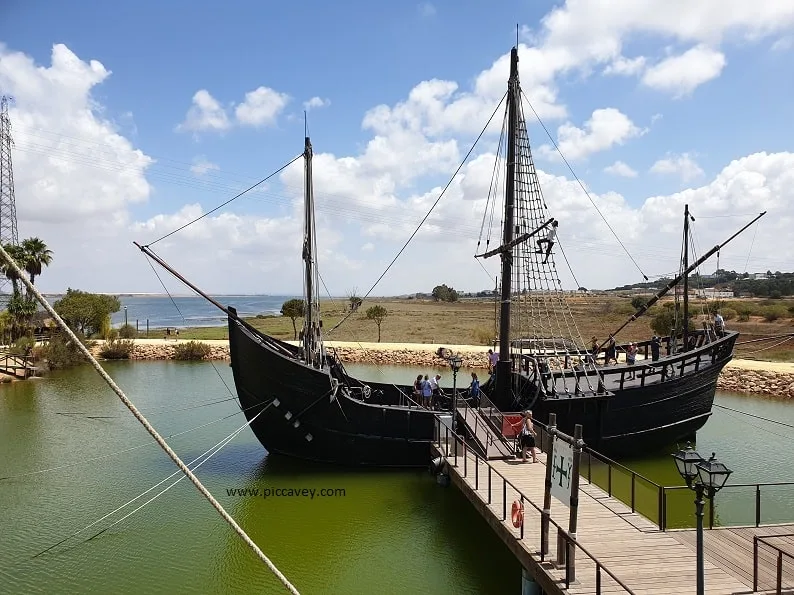
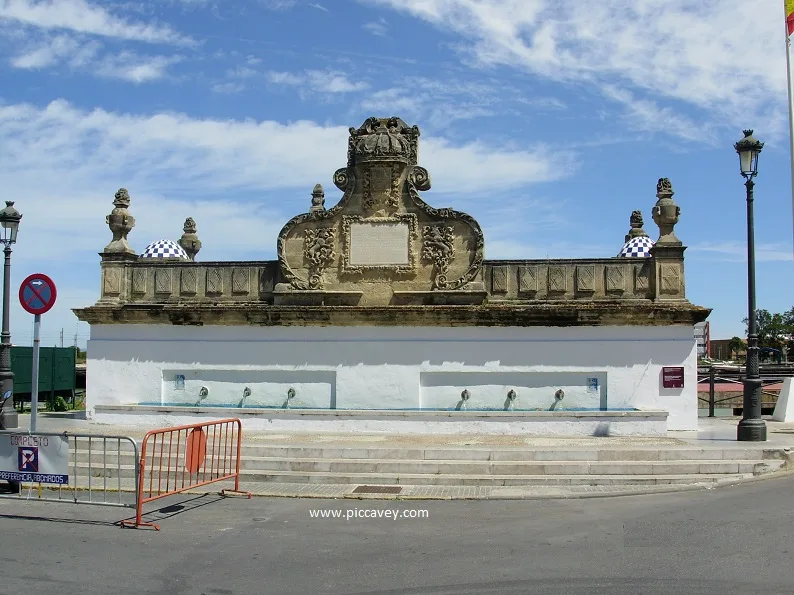
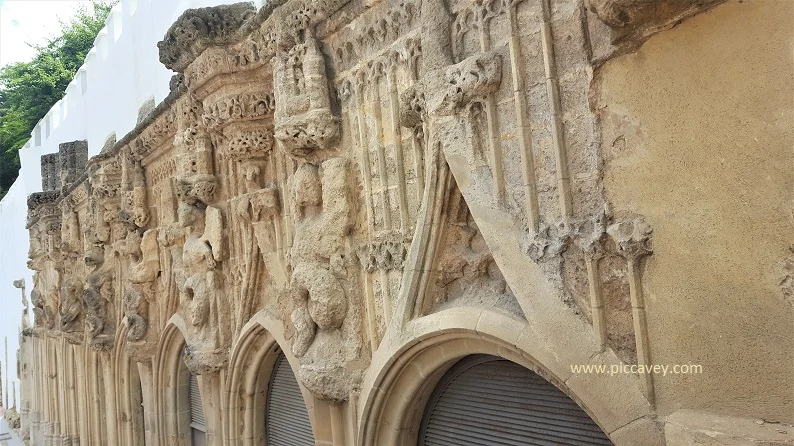
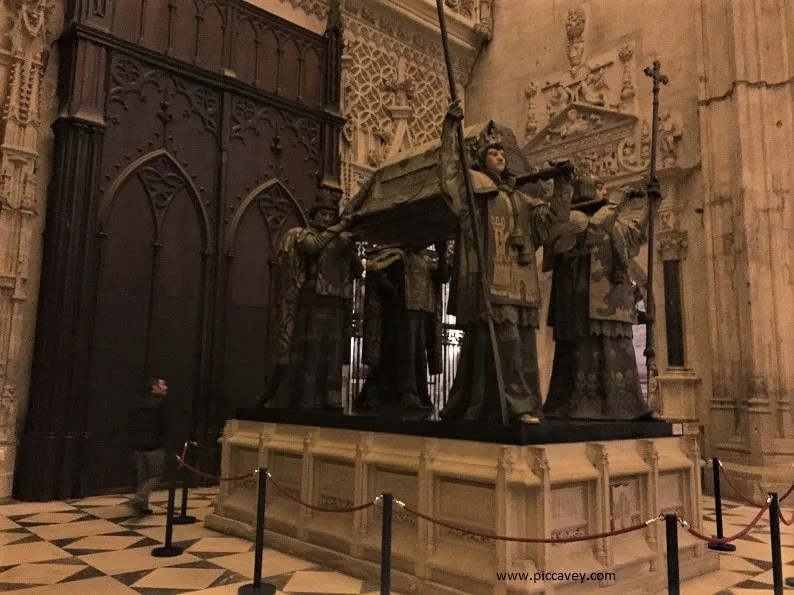

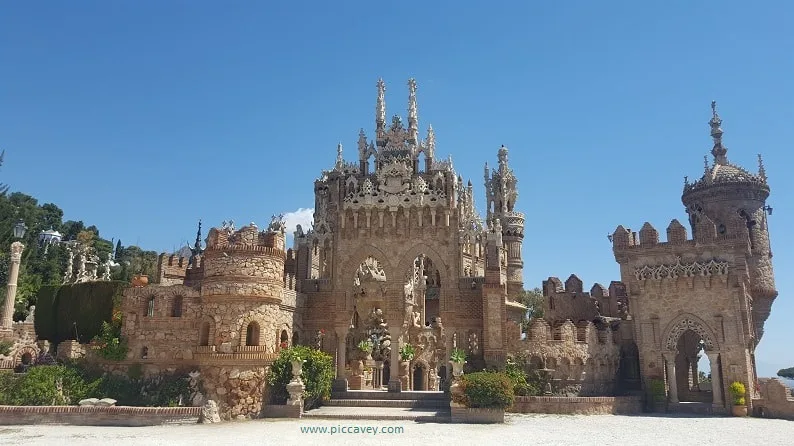
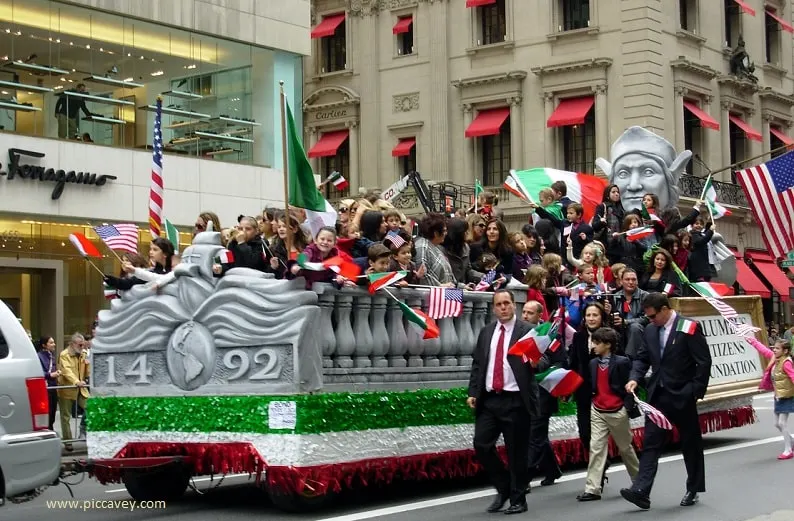
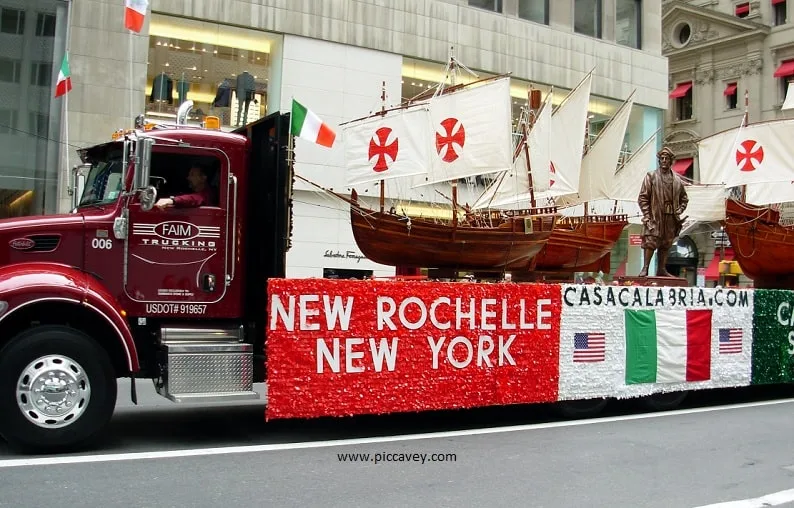
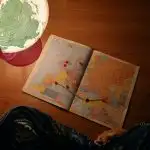
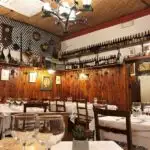
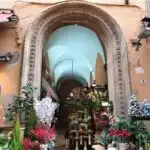

Most people know , he wasn’t Spanish born. but he was a Spanish citizen upon his death.
At this moment,there is a serious research regarding Columbus real place of birth based on his DNA and his siblings.We have to wait for the results!
Very well researched and written Molly!
Thanks for sharing in such a delightful way! Sandy
Dear Molly
You may be interested to know that Columbus is celebrated in the Civic Heraldry of the towns from which he sailed. To see a good example Google “Palos de la Frontera Coat of Arms”,
Best wishes
Simon
Thanks so much for that
I´d not noticed that gem. Good to know.
Very interesting read as I am very interested in History. And Lovely photos
Loved reading this Molly. Well done on all your research.
Glad you enjoyed the read… I was keen on adding up all the different parts of the story I´d collected over the years on my travels.